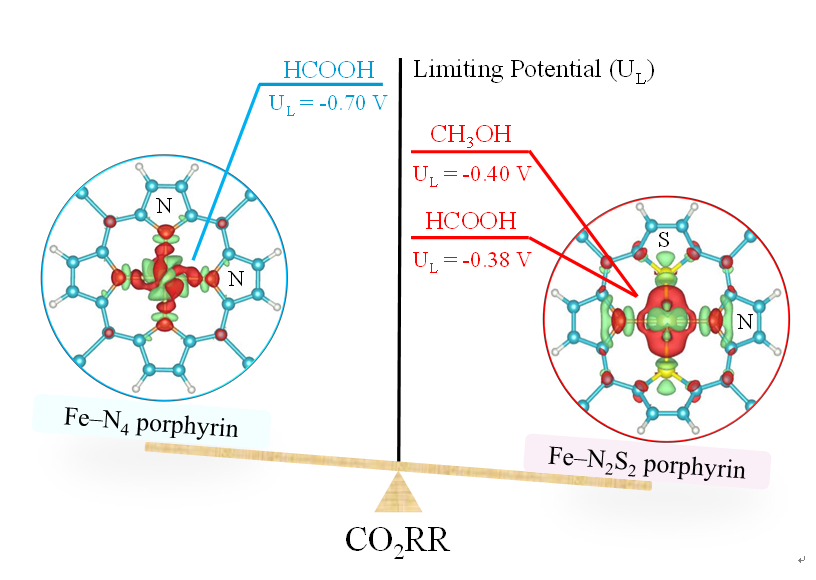
近日,课题组博士生曹守福的论文“Can N, S cocoordination promote single atom catalyst performance in CO2RR? Fe‒N2S2 porphyrin vs. Fe‒N4 porphyrin”被 Small(2020年中科院SCI期刊一区Top期刊,IF=11.459)接收!该工作研究了硫氮共配位环境对单原子催化剂在二氧化碳还原过程的提升性能及作用机理。
Single atom catalysts (SACs) are promising electrocatalyts for CO2 reduction reaction (CO2RR), in which the coordination environment plays a crucial role in intrinsic catalytic activity. Taking the regular Fe porphyrin (Fe‒N4 porphyrin) as a probe, our study revealed that the introduction of opposable S atoms into N coordination (Fe‒N2S2 porphyrin) allowed for an appropriate electronic structural optimization on active sites. On account of the additional orbitals around the Fermi level and the abundant Fe orbital occupation after S substitution, N, S cocoordination could effectively tune SACs and thus facilitating the protonation of intermediates during CO2RR. CO2RR mechanisms to possible C1 products via two-, six-, and eight-electron pathways were systematically elucidated on Fe‒N4 porphyrin and Fe‒N2S2 porphyrin. Fe‒N4 porphyrin yielded the most favorable product of HCOOH with a limiting potential of -0.70 V. Fe‒N2S2 porphyrin exhibited low limiting potentials of -0.38 and -0.40 V for HCOOH and CH3OH, respectively, surpassing those of most Cu-based catalysts and SACs. Hence, the N, S cocoordination might provide better catalytic environment than regular N coordination for SACs in CO2RR. This work demonstrated Fe‒N2S2 porphyrin as a high-performance CO2RR catalyst, and highlighted N, S cocoordination regulation as an effective approach to fine tune high atomically dispersed electrocatalysts.